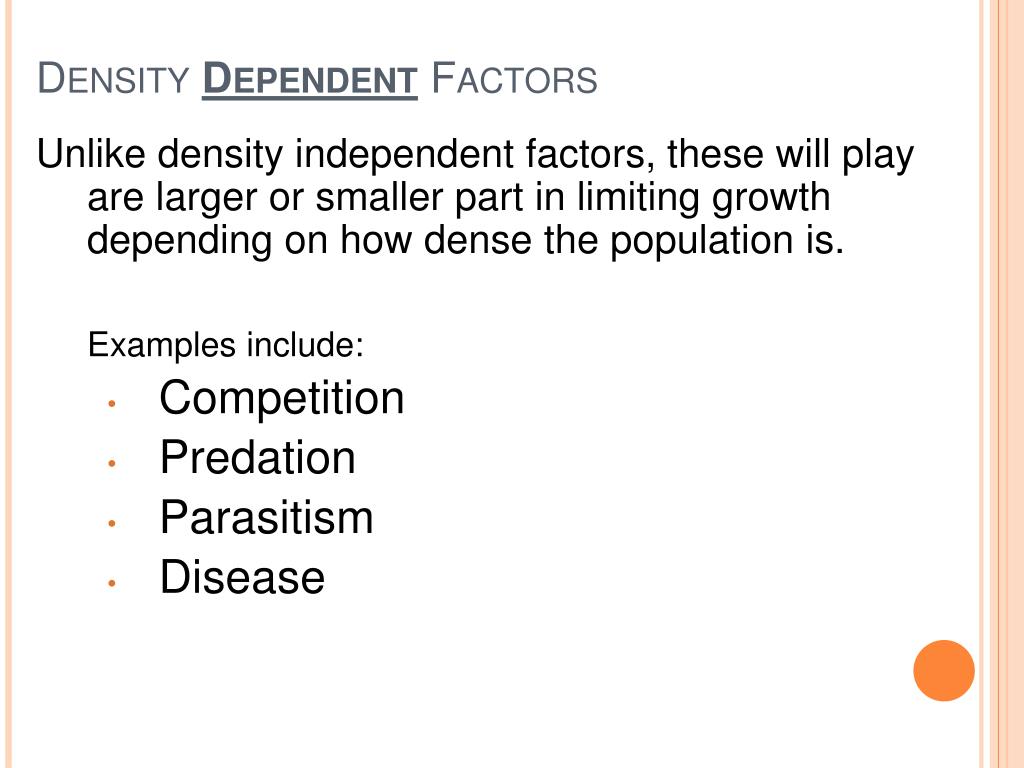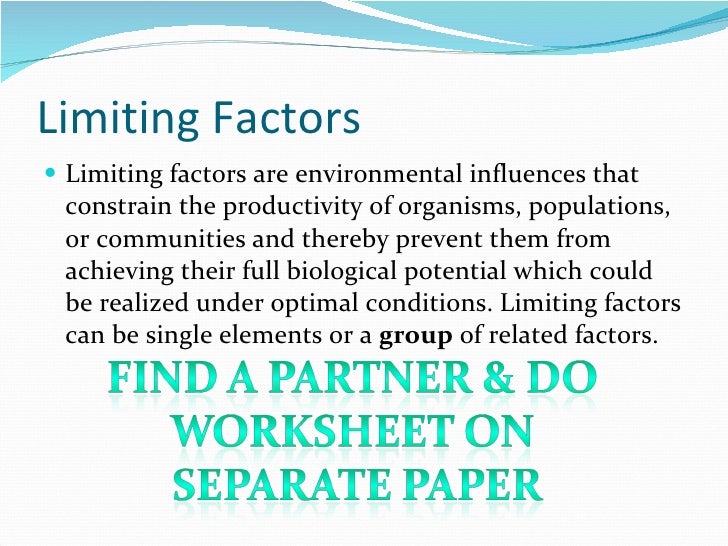

However stable these models are, real populations typically fluctuate in time. Mathematicians study this type of density-dependent dynamics as good examples of first-order nonlinear differential equations.
#Density dependent factors full#
In chapter 5 of Pastor 2008 and chapter 23 of Robinson 2004, full mathematical details are given for the basic logistic-growth equation. K is a stable equilibrium, and perturbations that move the population away from K, either positively or negatively, are always absorbed: sooner or later population returns to its carrying capacity. If N happens to overshoot K, the growth rate becomes negative and N returns to K after a certain time. When N is about K, the growth rate tends to zero and the population has reached the population size sustainable at the given environmental conditions (carrying capacity). However, N rapidly approaches K, and the growth rate progressively decreases.

This rapid growth can, for example, happen because in a small population, competition for resources might not be limiting. If N is small relative to K, the population is, at least approximately, growing exponentially. The derivation is based on modifying the exponential-growth model by introducing a term that Krebs 1994 and Gotelli 2008 interpret as the unused portion of the carrying capacity: this term depends on the ratio between population density N and carrying capacity K. For populations with overlapping generations and continuous growth, the logistic-growth equation is easily derived from the exponential-growth equation. There, the authors help the reader with very effective illustrations and a straightforward mathematics, which is, for example, used to clarify the link between exponential and logistic growth. Excellent introductions to the main logistic-growth models are chapter 2 in Gotelli 2008 and chapter 6 in Case 2000. The most important and complex forms of logistic models can be derived from the basic logistic-growth equation. One version of the model is first introduced in Verhulst 1838, although the model is often referred to as the Verhulst-Pearl model: Pearl and Reed 1920 is the first to make the model available to the broad scientific community. The most basic model of density dependence in single-species population is the continuous logistic-growth equation. One of the main goals is often to develop phenomenological models to project the temporal trajectories of populations, especially for species of strategic interest for food production and ecosystem management. In these studies, empirical and theoretical ecologists have tried for several decades to unravel the main mechanisms that underpin the demography of natural populations. There are a phenomenal number of observational and experimental studies of single-species population dynamics with density dependence. This article focuses on single-species population dynamics, with a particular emphasis on models that do not explicitly consider interactions between different species. Still, real populations show a remarkable tendency to fluctuations, and these fluctuations may be periodic or aperiodic and depend, to various degrees, on variation in demographic properties, environmental conditions, resources, and also interactions with other organisms.

This is a nonlinear process that in the simplest models causes population to settle at some typical value such as the so-called carrying capacity K. In terms of population dynamics, density dependence means that the velocity at which population grows (i.e., growth rate) varies with time as a function of population density N. However, exponential growth is observed in natural populations very rarely: several processes such as resource and space limitation, competition, disease, predation, and other factors control and limit population size. The tendency to exponential growth is so pervasive that it can be considered a fundamental law of biology. Natural populations possess an intrinsic tendency to exponential growth, which can, for example, be easily realized under laboratory conditions.


 0 kommentar(er)
0 kommentar(er)
